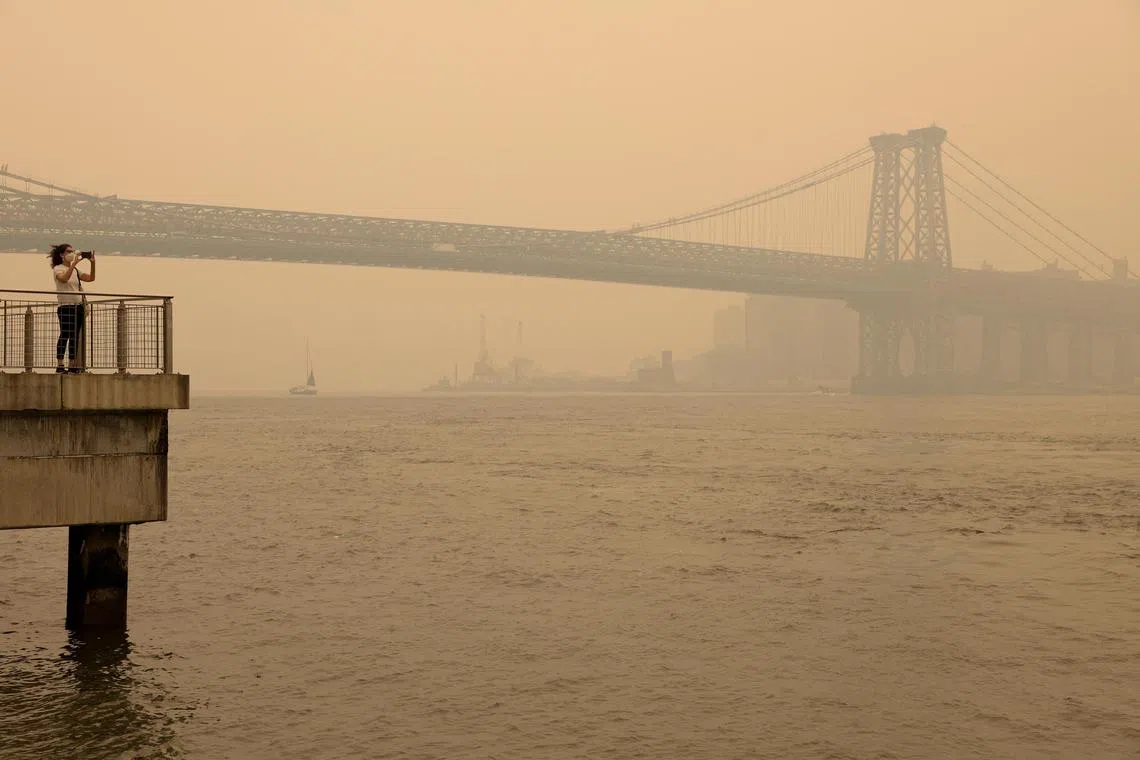US haze from Canada fires rare and extreme event: Expert
Sign up now: Get ST's newsletters delivered to your inbox

A person wearing a face mask taking a picture of the haze-shrouded Manhattan skyline on June 7, 2023.
PHOTO: REUTERS
Follow topic:
WASHINGTON - The air pollution swamping the north-eastern United States
This episode should last for at least the next two days, the expert told AFP on Wednesday.
How unusual is this event?
“In the last 20 or 25 years, the only event that comes even close to what we’re seeing in the past few days was a very similar situation on July 7 and 8, 2002.
“And that was... maybe even an eerily similar set-up, where there were new wildfires in Quebec, this smoke streams directly into the north-eastern of the United States.
“And for many stations in the north-east, that is the top most polluted, in terms of this particular matter, date on record.
“These observations that are coming in yesterday and today are certainly rivalling that July 2002 event. So this is exceptionally rare... It’s really just an extreme event.”
What made it possible?
“The really unique aspect of this event is that the wildfires that have erupted in Quebec recently,
“And so those two weather systems combined are driving winds out of the north and allowing the smoke from these fires in Quebec to stream directly into the north-east and mid-Atlantic United States.”
What type of pollution is it?
“We’re most concerned, when we think about smoke from wildfires, with what we call PM 2.5. It stands for particulate matter 2.5, meaning these particles are smaller than 2.5 microns – 2.5 micrometres, or millionths of a meter in size. So these particles are much, much smaller than even the width of a human hair.
“These particles, they’re so small that when you breathe them in, they don’t just irritate your lungs and cause breathing issues. They’re actually small enough to enter your bloodstream.
“And so they can cause all sorts of health issues, things like increased stress on the heart, heart attacks, stroke, because they’re just essentially travelling through your bloodstream throughout all the organs of your body.
“We know that whenever you observe pollution at code red levels, we can expect hospitalisations and hospitals visits to increase.
“It obviously affects those with pre-existing conditions. Those who are sensitive to air pollution, children, elderly, it affects them the most.” AFP

